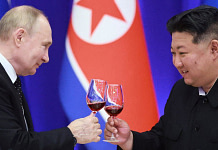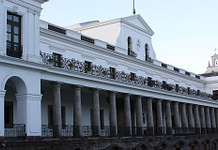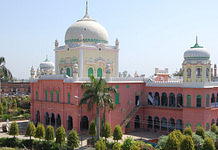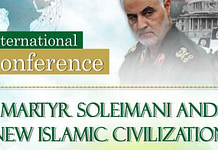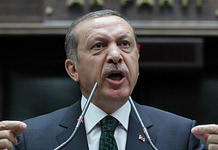INTRODUCTION
As far as 60 years ago, the idea of a unite Europe founded on the French-German alliance constituted not more than a wishful thinking, a mere utopia.
Today the reality is different. Even though among a lot of difficulties and uncertainties, the European continent is marching toward a greater and greater integration both in economy and in politics.
Given the heavy tensions that characterised the relations of the European States by that time, the European founding fathers decided to opt for a progressive economic integration able to bind their destinies increasing the opportunity-cost of a potential intra-European conflict.
Today, European Union constitutes the greatest commercial bloc of the world. Year after year, the intra-European trade has been improving thanks to the progressive reduction of tariff and non-tariff obstacles to trade.
This represent a big success for the European continent but the greatest victory consists of the fact that no one conflict has been fought on its soil.
Economic inter-dependence and consequent peace have produced another main outcome consisting of the strong reduction of the defence budget, thus allowing the countries to concentrate more resources on economy and population’s welfare.
South-Asia shows a radically different appearance. Racked by intra-regional tensions and threatened by global terrorism, south-Asia represents one of the less economic integrated regions of the world.
Trade has had a relatively low share in the region’s gross domestic product because south-Asian governments have followed an import-substitution strategy of development for 40 years. The region’s trade-to-GDP ratio has increased in recent years but intra-regional trade still accounts for less than 5 percent of the total.
This stands in mark contrast with the other regions of the world, for example in East-Asia and the Pacific where it is about 52% of the total trade is intra-regional; in Latin-America and Caribbean it is about 17%. South-Asia in contrast is the least economic integrated region and yet there are a number of studies that indicate that greater economic integration in the region would be beneficial for all the countries of the region and would help them realize the development objectives of reducing poverty through sustained and acute economic growth.
The aim of this article is to cast light on the positive processes of south-Asian economic integration.
It is divided into two principal parts:
– the first one is intended to describe the state of economic cooperation between Afghanistan and Pakistan focusing on the new transit trade agreement and on its capabilities to turn these two countries into a fundamental junction of the south-Asian trade.
– the second one concerns regional integration’s projects with a special focus on the energy field, which could result in the building of physical links in terms of gas and oil pipelines throughout the south-central Asian continent as well as in the satisfaction of the growing energy needs of countries like India and Pakistan.
These two sections will be followed by a conclusion in which I’ll try to sum up the current state of the integration, underlining the weaknesses of this process and the main obstacles that it has to face.
AFGHANISTAN – PAKISTAN ECONOMIC RELATIONS
Comforting indications of a greater economic integration come from Pakistan-Afghanistan relations.
In the last years, these two countries have markedly improved their economic exchanges, from 170 million U.S. dollars in 2000-01 to 1,491 million U.S. dollars in 2008-09.
A joint declaration issued at the end of a two-day visit by Afghan President Hamid Karzai on “Next Steps in Afghanistan-Pakistan Comprehensive Cooperation” (12/03/2010) expressed both sides’ determination to realise the full potential of their “vast human and natural resources for the progress and prosperity of their people”
These two countries are working hard in order to go over tensions that have been characterized their relations until now and are trying to build solid and profitable linkages.
The signature of the Afghanistan-Pakistan Transit Trade Agreement constitutes an important achievement that goes in the right direction.
The need to elaborate a new agreement concerning the transit trade was clear. Pakistan had realised that the Afghan Transit Trade Agreement (ATTA) has become outdated and unfavourable due to a host of reasons.
The old agreement, which is known as Afghan Transit Trade Agreement (ATTA), allows both the contracting parties the freedom of transit to and from their respective territories.
Under ATTA, five transit routes are available to Afghanistan for transit trade from Pakistan. These include:
-
Peshawar – Torkham and vice versa;
- Chaman – Spin Boldak and vice versa.
-
Ghulam Khan Kelli;
-
Port Qasim;
-
Port Karachi.
The UN brokered ATTA enables landlocked Afghanistan to import good through ports in Pakistan without paying custom duties, dues or charges of any kind on transit traffic, except charges for transportation and the cost of services rendered.
But over the years, this agreement has been abused to import products only to push most of them back into Pakistan clandestinely through the porous Durand Line (so-called “re-export”).
Absence of economic activities and limited writ of the State provide an ideal environment for the cross-border movement or smuggling of goods.
No doubt, re-export trade between Pakistan and Afghanistan has persisted for decades, favoured by the ethnic linkages between the population across the frontier. However, the chaos, conflict and breakdown of formal economic institutions in Afghanistan, following the withdrawal of Soviet troops and further aggravated by a civil war lasted 4 years and finally by military operations conducted by US and NATO troops, proved conducive for the massive growth of the cross-border smuggling of enormous quantities of goods.
Smuggling of the transit goods has been facilitated by a number of causes such as: Pakistan’s tariff and protection policy, the geographic factor, the BARA markets, the truck mafia, the involvement of politicians, lack of policy implementation and the narco dollars (a main part of the incomes from the drug’s market got launder in the illegal trade).
The main players involved in ATT have accumulated immense fortunes, political clout and influence over the years. According to Ahmed Rashid: “The Afghan transit trade has become the biggest smuggling racket in the world and has enmeshed the Taliban with Pakistani smugglers, transporters, drug barons, bureaucrats, politicians, policy and army officers”.
Another important consequence of the illicit transit trade consists on its impact on the factors of production; in particular, it has stunted the growth of NWFP’s nascent industry, resulting in revenue loss to the Government of Pakistan and diverting the factors of production from the formal to the underground sector..
The Afghan transit trade has virtually strangulated Pakistan’s manufacturing sector, forcing many foreign investors to close their operations in Pakistan and thereby increasing the unemployment in the country. Thus, the smuggling has deprived the country of substantial investments and the antecedent revenues amounting to over two billions dollars annually, in the shape of corporate taxes and state duties alone.
In response to pressures resulting from the manufacturing sector and the importers, the Government of Pakistan put 17 items on the negative list of the ATT in 1996 and added another seven items to the prohibitive list in 2000-2001.
Apparently imported for consumption in Afghanistan, these goods were, in reality, destined for ultimate consumption in the Pakistani market as the Afghan market did not have the capacity to absorb those goods in such a massive quantity.
In 2003 and then in 2004, considering the geo-political situation, the Government of Pakistan revised the negative list, from which 20 items were deleted.
However, by that time it was clear that the agreement needed to be renegotiated. The old arrangement, for instance, did not contain a provision enabling transit trade to the Central Asian republics through Afghanistan – a serious impediment to Pakistan’s aspirations.
Another important concern for Pakistan was the growing diversion of Afghan transit trade to Iran because of problems faced by Afghan importers.
In 2006, the Pakistani government directed high-ups of the Ministry of Commerce and the Central Board of Revenue (CBR) to prepare a draft of the new Afghan Transit Trade Agreement (ATTA) after examining such pacts in other regions of the world.
To regain the major volume of the trade, Pakistan had no option but to offer more facilities and concessions to Afghan importers through the new ATTA, he added.
The decision to draft a new transit trade agreement was taken in a meeting of the Trade Facilitation Committee constituted under the National Trade Corridor Improvement Programme (2006).
After seven rounds of bilateral Joint Working Group meetings on trade and transit, the Commerce Ministers of Afghanistan and Pakistan signed a “Record Note” called Afghanistan Pakistan Transit Trade Agreement (APTTA) on July 18, 2010. The note was signed in the presence of Pakistani Prime Minister Yusuf Raza Gilani and U.S. Secretary of State Hillary Rodham Clinton.
The APTTA has been signed by the Commerce Minister Makhdoom Amin Fahim and his Afghan counterpart Anwarul Haq Ahadi on October 28th.
The agreement comprises 13 sections, 58 articles, 2 annexes and 4 protocols. The protocols cover international carriage by road of goods in transit, temporary admission of road vehicles for commercial use, customs control and transit regime and control of precursors and chemical substances used in illicit manufacture of narcotics drugs or psychotropic substances.
Under the transit agreement, the two countries will provide guarantees for freedom of transit to both countries and allows Afghanistan to have access to Pakistan’s seaports and Pakistan to have access to Central Asian Republics. At the moment, Pakistan’s exports to Central Asia are quite insignificant. Still, this provision will have positive implications for Pakistan’s economy in the long run.
The agreement also allows Afghanistan to access Wagah for its exports to India but restricts Indian exports to Afghanistan through Wagah border.
Although no justification was given for curbing Indian exports to Afghanistan, officials in the past have been citing ‘hyped’ security concerns as the major reason.
According to the Federal Secretary Commerce Zafar Mehmood, when relations between Pakistan and India reach a level where both the countries would trade freely, only then this kind of facility could be considered and extended to Afghanistan.
The trade between India and Afghanistan through sea routes will, however, continue to take place under the previous arrangement.
The two sides will have an Afghanistan-Pakistan Transit Trade Coordination Authority (APTTCA) to be co-chaired by Pakistan’s secretary commerce and Afghan deputy secretary for commerce. Representatives from relevant government ministries and chambers of commerce from both sides will be part of the committee to monitor effective implementation of the agreement and formulate and monitor measures to curb smuggling.
The committee will also resolve disputes regarding interpretation or implementation of the agreement and authorise studies on issues related to transit trade. In case of failure in mutual resolution of disputes, arbitral tribunals would be set up comprising one member each from the two countries and a third to be mutually agreed or through ballot in case of disagreement on the third member.
To tackle the issue of unauthorised trade, the two sides agreed to install tracking devices on transport units and a mechanism for customs to customs information sharing (IT data and others) will be established.
In this context, it has also been agreed that financial guarantees equal to the amount of import levies of Pakistan have to be deposited by authorised brokers or customs clearing agents to check the un-authorised trade and these deposits will be released after the goods exit the country.
In case the goods do not exit the country within the specified time, the guarantees will be enchased by customs authorities. Moreover, the agreement to be signed will be subject to any other measures to be taken by APTTA.
APTTA is in the interest of both Pakistan and Afghanistan which would not only provide job opportunity to thousands of unemployed Afghans and Pakistanis but would also help curbing smuggling.
Once implemented, the APTTA could provide a major boost to the Afghan economy and regional trade.
This deal will for the first time provide an opportunity for Afghan producers of fruits, dry fruits, carpets and marble to ship their goods across Pakistani territory to the vast consumer market of India and beyond. This is important for the long term sustainability of the Afghan economy through its own resources. Apart from internationally acceptable and verifiable standards of sealable trucks, the APTTA also allows export of perishable goods in transit in open trucks and other transport units. This is important as Afghanistan traditionally used to export plenty of fresh fruits like grapes, melons and pomegranates to India.
The Afghanistan-Pakistan Transit Trade Agreement therefore constitutes an important start for linking the South and Central Asian economies. In this way, Afghanistan’s policy of promoting the country as a “land bridge” between different regions may become a reality in near future.
However, APTTA doesn’t constitutes the only agreement that goes toward a greater economic integration between these two countries.
In 2008, the Federation of Pakistan Chambers of Commerce and Industry (FPCCI) and its afghan counterpart signed a Memorandum of Understanding (MoU) in order to boost trade between Pakistan and Afghanistan and to remove hurdles in the way of bilateral trade.
The scope of the activities of the Pak-Afghan Chamber of Commerce and Industry (PACCI) includes exchange of informations, economic cooperation and services between the two countries. The body also prepare recommendations to promote effective economic relations and submit it to their respective governments.
REGIONAL COOPERATION: THE ENERGY SECTOR
Along with Turkmenistan and India, Pakistan and Afghanistan are currently engaged in discussions over the proposed Turkmenistan-Afghanistan-Pakistan-India gas pipeline project.
Actually it is a project that dates back to 90’s. When the Taliban was governing Afghanistan, two consortia vied for the right to take on the project, one led by Unocal (an American firm) and the other by Bridas (an Argentinean firm). However, negotiations with the Taliban broke down in July 2001, just before the attacks of September 11 but they were restarted in 2002 by President Musharraf and interim President Karzai on the occasion of a meeting in Islamabad, where they announced their agreement to cooperate on the proposed pipeline.
Participating countries have held numerous high-level planning meetings during the past eight years, with Asian Development Bank (ADB) sponsorship and multilateral support.
The heads of state of Turkmenistan, Afghanistan and Pakistan had signed in 2002 the Inter-Governmental Agreement (IGA) for oil and gas pipeline projects.
India joined the project in 2008, changing the project’s name from TAP to TAPI.
A pre-feasibility study sponsored by the Asian Development Bank in 2004 indicated that the 1,680km pipeline project was economically and financially viable and the estimated cost was $3.3 billion (revised to $7.6 billion in 2008).
The petroleum ministers of the four states on Sept. 20, 2010, signed a framework agreement (GPFA) and a gas sales and purchase agreement (SPA) in Ashgabat and the pipeline’s completion date has been tentatively set for 2015.
During a meeting of the federal cabinet hold on October 27th, the Pakistan government accorded formal approval for the Turkmenistan-Afghanistan-Pakistan-India gas pipeline project.
However, when construction will start is uncertain because security in Afghanistan and in the tribal areas of Pakistan remains a problem.
If the pipeline goes ahead successfully, it could be Afghanistan’s largest development project since as the transit revenue could amount to US$300 million per year. That would represent about one-third of the domestic budget for development efforts. Transit fees could help pay for teachers and infrastructure.
For Pakistan, the project could help avert a growing energy crisis already causing electricity shortages that have brought heavy criticism to a government now under enormous pressure from floods that have caused billions of dollars in damages.
The planned pipeline would have initial capacity for 33 billion cubic metres a year and would run for nearly 2,000 km (1,250 miles), including 735 km across Afghanistan and another 800 km through Pakistan. Actually, it would follow the ancient trading route from Central to South Asia, extending from the Dauletabad gas field in Turkmenistan along the highway through Herat, Helmand and Kandahar in Afghanistan, to Quetta and Multan in Pakistan, and on to Fazilka in India.
TAPI is expected to boost the economies of all four countries. In 2008, Pakistan’s Prime Minister described the pipeline as a vital project for the development and progress of the region. Further, pipelines are potentially good for peace.
Another import sign of the growing cooperation between central and south-Asian countries is represented by the Central Asia/South Asia Regional Electricity Market. The first CASAREM’s project, CASA-1000, born in 2007 in order to improve regional economic cooperation and facilitate the regional electricity trade.
This project allows the export of existing surplus hydropower from Tajikistan and the Kyrgyz Republic to South Asia.
This kind of project are susceptible to, as like as been recognized by the Presidents of Afghanistan and Pakistan, catalyze “additional energy investments and trade both in the four CASA countries as well as the region and that it could have a positive demonstration effect for other regional infrastructure projects between their two countries, such as the up-gradation of Peshawar-Kabul road and the Peshawar-Kabul Rail link”.
All these projects go towards a better economic integration of the south-Asian region and contribute to the creation of greater confidence and interdependence among regional players.
Always concerning the energy sector, it is important to underline an important initiative developed within the frame of the South-Asian Association for Regional Cooperation (SAARC).
The growing energy need within the region urged this organization on creating a common framework in which south-Asian countries could develop a coordinated and more efficient strategy concerning their energy needs.
In order to achieve these aims, a SAARC Energy Centre was established in October 2005 with the mandate to initiate, coordinate and facilitate SAARC programme in energy sector.
The energy centre has undertaken a series of activities such as developing the concept of SAARC Energy Ring (which provides a road map for energy cooperation among SAARC countries), contributed in preparation of SAARC plan of action in energy efficiency and conservation and remains actively engaged in SAARC Regional Energy Trade Study with the assistance of ADB.
While addressing the 5th meeting of the South Asian Association for Regional Cooperation Energy Center’s Board of Governors, the Pakistan’s Federal Minister for Petroleum and Natural Resources Naveed Qama said that the centre had made progress adding that it should strive to be a’ living organism’ and to move and respond to the challenges of the time so that the efforts can result in much more prosperous South Asia.
Moreover, he underlined the importance of such initiatives and highlighted the benefits of pooling of resources for collective benefit.
CONCLUSIONS
There are certainly many things to do in order to realize a strong integration of the south-Asian region and many threats to deal with.
Two main obstacles impede the development of strong regional relations: the afghan quagmire and the lack of trust between Pakistan and India, the two major countries of south-Asia.
Focusing on economy and building intense linkages between these countries may facilitate the realization of the hard task consisting in the creation of a space of free trade and peace.
The European case represents a clear demonstration of economics linkages’ importance in order to strengthen and normalise inter-state relationships.
This kind of linkages are actually able to generate a virtuous circle that considerably raises the opportunity-cost of regional conflicts.
Indeed, this virtuous circle brings into existence economic lobbies within the States that strive for pushing away the spectrum of a conflict that would damage their interests. Moreover, these regional economic relations facilitate the normalization of inter-state relations, by creating people-to-people contacts that are very useful in normalising inter-state relations.
An integrated south-Asian region is a essential condition in view of a stronger development of the States of this area. Many hurdles are still to be cleared but some positive indications let us hope in a better future for all the south-Asian countries.
Questo articolo è coperto da ©Copyright, per cui ne è vietata la riproduzione parziale o integrale. Per maggiori informazioni sull'informativa in relazione al diritto d'autore del sito visita Questa pagina.


